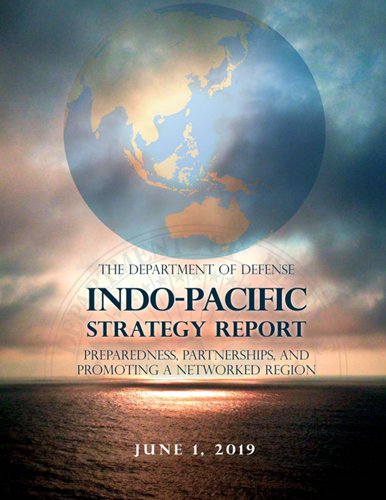HOME >> OPINION
Countries in region can see through US design
By Xin Qiang Source:Global Times Published: 2019/8/13 18:13:40

The photo is the cover of the Indo-Pacific Strategy Report published on the official website of the US Department of Defense.
US Secretary of Defense Mark Esper said on August 3 that the US plans to deploy ground-based intermediate-range conventional missiles in Asia. One day later, Esper said that China's "destabilizing behavior" in the Indo-Pacific region is "disturbing."
Esper went on to accuse China of "weaponizing the global commons, using predatory economics and debt for sovereignty deals, and promoting state-sponsored theft of other nations' intellectual property."
China has never destabilized the Indo-Pacific region, nor has it resorted to force in the past to resolve territorial disputes. In contrast, the US has never stopped using force.
Since the end of World War II, interfering in the Asia-Pacific region's affairs had become a habit of the US. The US wants to dominate regional security and wants to prevent any competitor from challenging its regional and global dominance.
US Indo-Pacific Strategy is basically Asia-Pacific strategy 2.0. The contents are the same. The US wants to make use of Asia-Pacific regional disputes, including territorial and historical issues that concern China-Japan relations. It is a tactic that provides the US with access to the region.
The US goal is simple - counterbalancing China, dominating the Asia-Pacific region and containing the rise of China.
On August 2, the US withdrew from the Intermediate-Range Nuclear Forces Treaty. The move raised concerns from many countries. The US believes the treaty restricts its development of intermediate-range nuclear forces, which may make the country inferior to China in this field. By withdrawing from the treaty, the US hopes to force China to participate in trilateral nuclear arms reduction negotiations with the US and Russia. In other words, Washington simply wants to restrict China's intermediate-range nuclear forces.
The US accused Russia of violating the treaty. This is merely an excuse. US rhetoric is typically different from its real strategic purposes. One may fall into Washington's trap if he or she believes its excuses.
Regardless of how the US tries to promote its Indo-Pacific Strategy, the real issue is whether it has sufficient strategic resources. The truth is it does not. The country is experiencing financial difficulties. The US also lacks support from the Asia-Pacific for its regional strategy.
President Xi Jinping met Japanese Prime Minister Shinzo Abe in June. They agreed to build bilateral relations that fit the needs of the new era. China has also improved its relations with the Philippines and Vietnam. The Philippines know the US regards it as a pawn in the South China Sea, and Manila will not take the bait.
Neither the Philippines nor Vietnam is likely to coordinate with the US over the South China Sea issue. The US has already lost its strategic pivot to carry out its Indo-Pacific Strategy. Washington has lost the trust of other countries.
When it comes to disputes, China has not unilaterally resorted to force to make other countries yield, although it does have the ability. China has been promoting the Belt and Road Initiative (BRI), providing infrastructural support to others, and helping the regional countries' economic development.
Countries in the region are well aware which country genuinely wants regional peace and stability and which country only wants to stir up trouble.
As long as other countries can realize that the US is sowing discord in the region, Washington's influence will be undermined. The situation has improved for China, and China should stick to its own path - promoting the BRI, improving neighborly good relations, and strengthening cooperation of security, economy, and diplomacy with surrounding countries.
Time will prove that China is a regional peace creator.
The author is deputy director of the Center for US Studies at Fudan University. opinion@globaltimes.com.cn
Posted in: VIEWPOINT